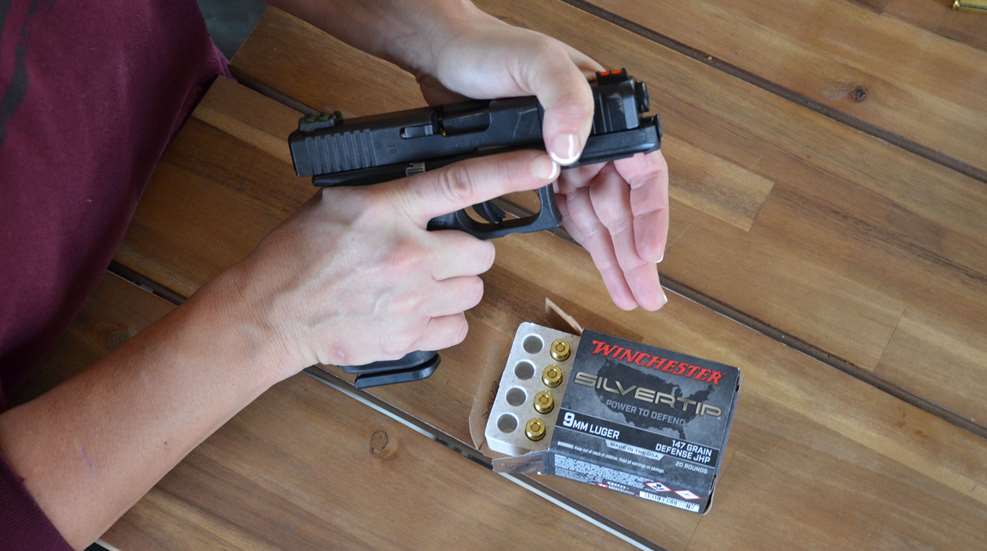
The record-breaking number of Americans—nearly half of them women—who have stepped into the role of gun owner means we have the opportunity to add millions of new faces to the Second Amendment community. But since some of them might not be aware of just how large and enthusiastic our community is, it is incumbent on us to let them know we are here. Some ways to do that are to invite them to the range, talk about firearms and help them learn by sharing information found in articles like this. For example, here I’m going to cover one function that all firearm owners should understand: the press check.
What Is a Press Check?
A press check is the act of pulling your action open slightly so that you can see a chambered round, but not so far that you cause the round to be ejected from the firearm.
You can do a press check with a pistol, rifle or shotgun, but I’m going to focus on a pistol because the most common reason to perform a press check is to verify that your concealed-carry firearm is loaded. Ideally, you would do this every time you don your concealed-carry firearm.
How to Perform a Press Check
How you perform the action of a press check will depend on your firearm and hand strength.
Option 1: Wrap your fingers over the top of the rear end of the slide, thumb tucked under the beavertail or top-most back of the grip. You can press the slide toward your thumb and this will open the action slightly to allow you to see if a round is in fact chambered. This option is easier to perform for those with limited hand strength and for pistols with heavy springs that require a lot of force to overcome. You will tend to find serrations or cuts in the slide on many of the new pistol models precisely engineered to facilitate manipulations like this.


Option 2: Another way to perform a press check is to grasp your slide just behind the front sight with your thumb and index finger, and press the slide rearward just enough to see the chambered round. This will be easier for stronger hands and pistols that do not have very heavy springs. One tip is to also push with your hand holding the pistol grip to help overcome the spring tension.

Safety Note
Follow the rules of firearm safety when handling your firearm, empty or loaded. But when performing any action where you assume the gun is loaded, you need to be keenly aware of the placement of your fingers in relation to the trigger and muzzle. Keep your finger off the trigger and out of the trigger guard completely. Additionally, handling any firearm requires that you consider where the muzzle is pointed (not at your finger or body) and what’s beyond it like the potential neighbor in an apartment building or on the street outside. It’s a great idea to consider that when you handle a firearm, especially inside a building, you find a “safe area” like you would have on a range, where no people could potentially be in front of your firearm.
Troubleshooting
If your slide doesn’t close all the way after you check for a round, tap the back of the slide with the palm of your hand to push it into “battery” or a fully closed state.
If you accidentally eject the chambered round, continue pulling the slide back all the way rearward and let it slingshot forward to chamber the next round. Then drop your magazine, put the extra round back into it, seat it back in your gun and proceed with life. It will happen if you are overzealous or trying to perform a press check too aggressively.

As you begin to work with firearms and learn the terminology surrounding their use, focus on clear, controlled and thoughtful attention to what you are doing. Don’t rush or reject help. Firearms are tools, but like any powerful tool, they need proper training in regards to safety. So don’t put yourself or others in a potentially problematic situation just because you don’t want to look like you don’t know something. Ask for the explanation or concept to be broken down again and master even the simplest facets of gun-handling so that you and those around you truly are safe. It’s okay to say, “I’m confused.” or “This is my first gun/time at the range.” to your instructor.
Most of all, be proud of the fact that you have taken the steps required to own a firearm and take charge of the personal safety of yourself and your family!














































